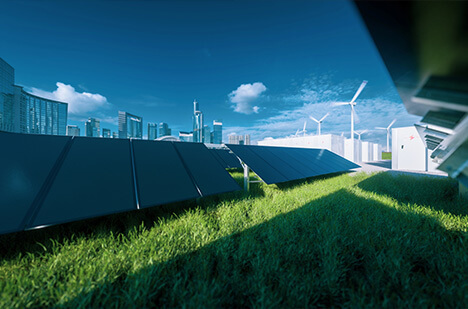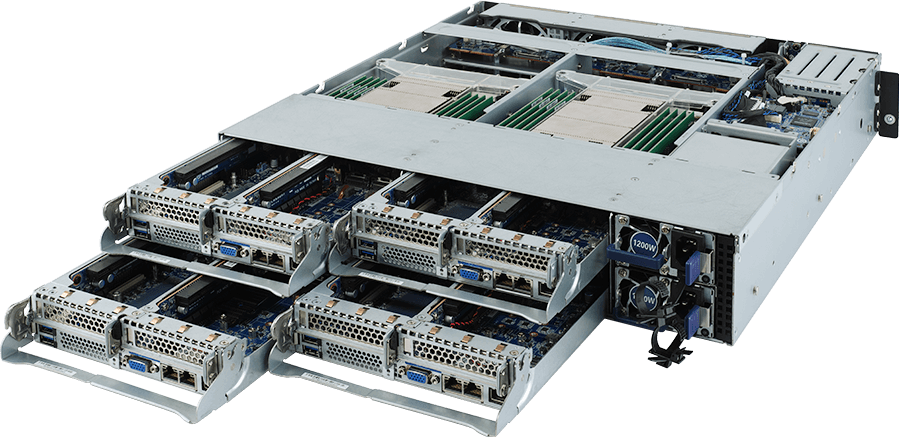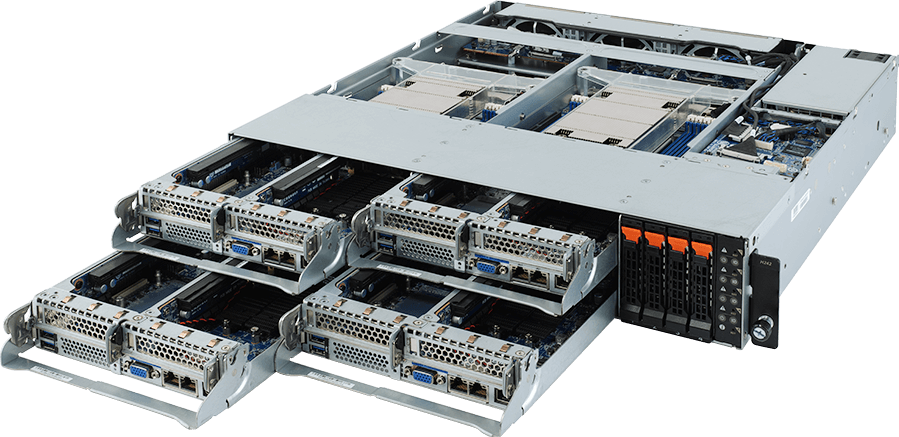Smart Cities can Meet the Challenges of Urbanization
In 1900 just 14 percent of people on earth lived in cities¹, but today over 55% of the world's population lives in urban areas, and the rate continues to grow. The UN predicts that by 2050 the percentage of people living in urban areas will edge closer to 70%². Improving cities is a pressing global need as the world's population grows and our species becomes rapidly more urbanized. Managing the resources and operations of so many large cities can only be cost-effective and efficient if they are automated and connected – and this is the basic premise of smart cities.
In a smart city, sensors can be placed everywhere to collect data, with streets, buildings, public and personal devices all being interconnected, and the huge amount of data generated by these sensors then being communicated, analyzed and fed back to the infrastructure to affect changes in operation³. Example applications can include waste management, traffic and parking management, logistics and fleet management of public vehicles, environmental sensors for air and water quality monitoring, as well as electronic billboards and charging stations for electric vehicles.
In a smart city, sensors can be placed everywhere to collect data, with streets, buildings, public and personal devices all being interconnected, and the huge amount of data generated by these sensors then being communicated, analyzed and fed back to the infrastructure to affect changes in operation³. Example applications can include waste management, traffic and parking management, logistics and fleet management of public vehicles, environmental sensors for air and water quality monitoring, as well as electronic billboards and charging stations for electric vehicles.
¹ The Guardian Cities in Numbers: How Patterns of Urban Growth Change the World, 23rd November 2015
² United Nations 68% of the World Population Projected to Live in Urban Areas by 2050, 16th May 2018
³ Babak Beheshti What 5G Means for Smart Cities, Smart Cities World, 23rd October 2019
Use Case Scenarios
The Challenge of Implementing a City-Wide IoT Network
To enable the smart cities of the future, a huge number of sensors and other wireless devices need to be connected to the software and systems that will store, process and analyze this data, and then use this information to run and manage citywide services. mMTC (Massive Machine-Type Communications) is a new service category of 5G that can support extremely high connection density of online devices. Network operators can therefore combine mMTC technology together with a MEC (Multi-access Edge Computing) based on GIGABYTE's H242 Series servers to build the infrastructure needed to support this massive IoT network.
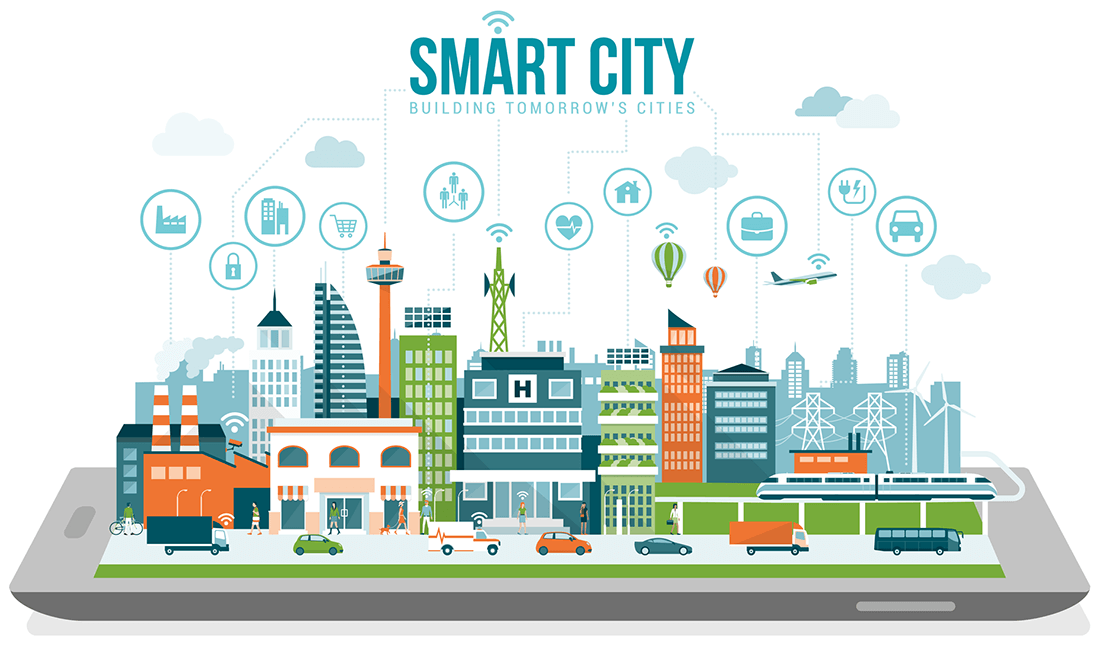
Smart City
A Solution For Smart Cities: mMTC + MEC
mMTC for High Connection Density
MEC to Reduce Network Backhaul
Network Slicing for Diversified Service Requirements
mMTC for High Connection Density
mMTC technology aims to provide connectivity to a huge number of devices such as sensors that typically transmit and receive only small amount of data sporadically. An mMTC network is designed to be latency-tolerant, efficient for small data blocks to be transmitted or received, and to be sent on low bandwidth pipes. The main performance requirement for a mMTC network service is to support a high connection density, of up to 1 million devices per square km, which is 10 times the maximum amount currently possible with 4G LTE.
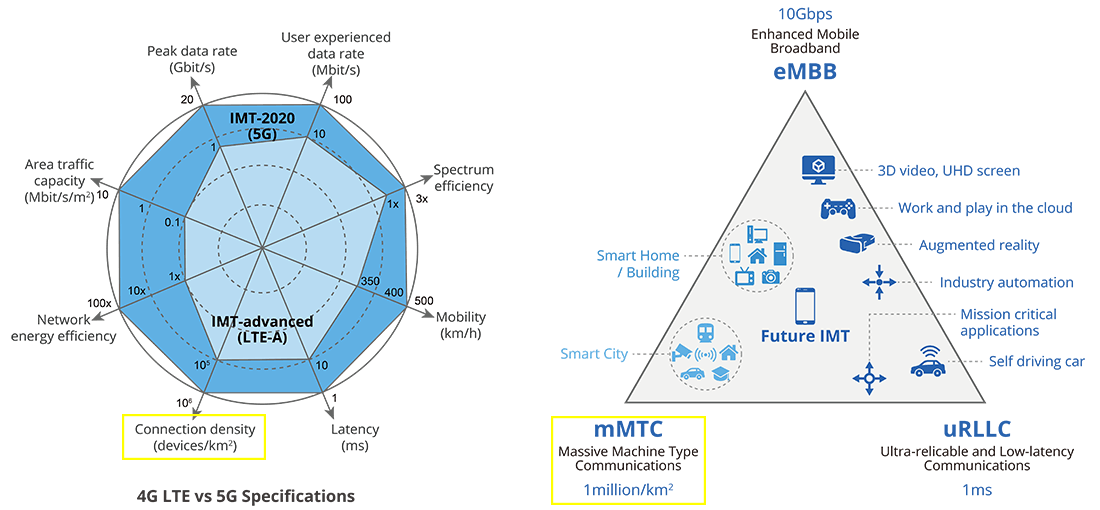
4G LTE vs. 5G and mMTC Usage Scenarios
MEC to Reduce Network Backhaul
In a mMTC network, the huge amount of data generated from all the interconnected sensors needs to be aggregated and analyzed to understand and control the environment in which they are situated. Edge computing allows for these large data transfers and analytics to take place close to the IoT clusters at the edge of the network, reducing network backhaul and therefore infrastructure and operating costs.
Data generated by these devices can therefore be processed at the network edge using a MEC (Multi-access Edge Computing / Mobile Edge Computing ) architecture. This can decrease bandwidth and energy consumption across the network and removes the need to go through the central cloud server.
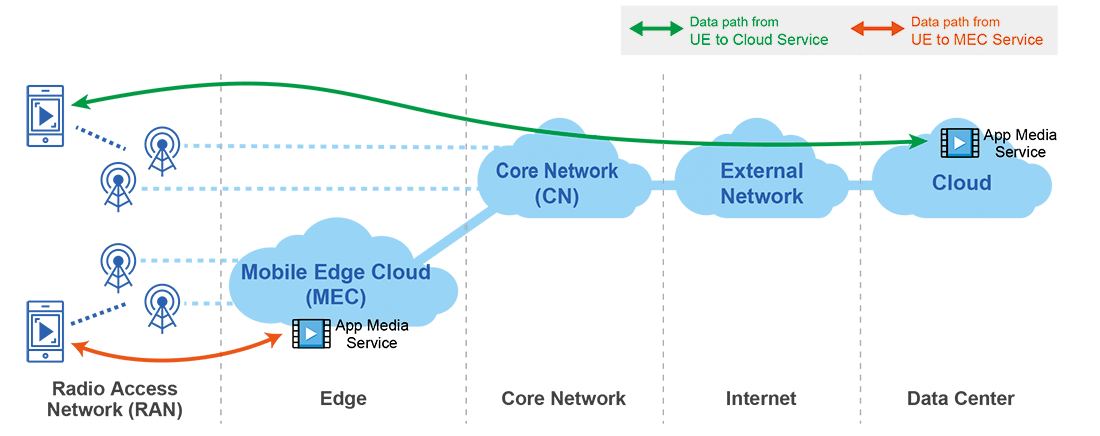
Network Topology: 4G vs. 5G
Network Slicing for Diversified Service Requirements
Network slicing is an architecture that enables different virtualized and independent logical networks on the same physical network infrastructure, in order to meet diversified service requirements.
Network slicing enables network elements and functions to be easily configured and reused in each different slice to meet a specific requirement. One slice appears like a self-contained network that includes the core network and the RAN. However, each of these slices can have its own network architecture, security, quality of service and network provisioning as a result of the network virtualization software implementations. This allows one network slice to provide low-security, low-bandwidth services (such as for mMTC), while another slice can provide high-security, high-reliability services (such as for URLLC).
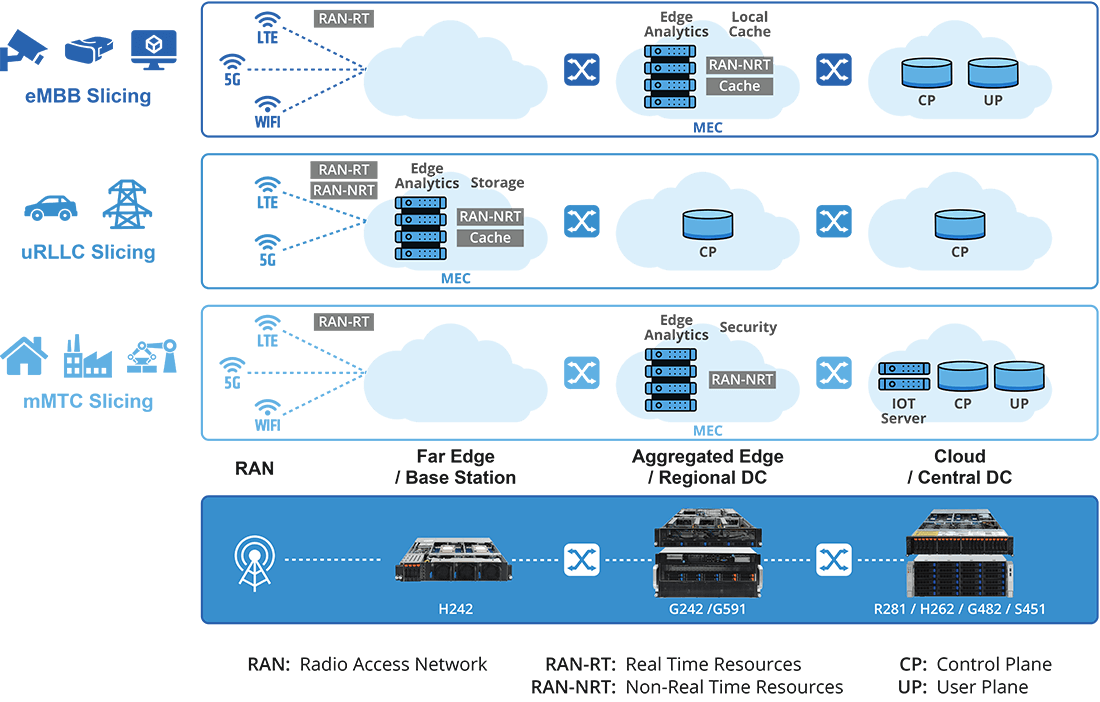
Network Slicing
The fully cloud-native architecture of 5G and MEC is ideal to support network slicing, allowing for an mMTC network to run on the same physical infrastructure as other 5G services to save on infrastructure investment and network operating costs. Network slicing is the key to meeting 5G's diverse requirements, and is a perfect solution to seamlessly integrate smart city applications together with other applications with different network service requirements such as for eMBB or URLLC.
GIGABYTE's H242 Series as the Hardware Base for a mMTC MEC
GIGABYTE's H242 Series server has an ultra-small footprint form factor (four half-width nodes in a short depth 2U chassis), ideal for deployment at the far edge such as in existing macro cell site base stations. It features four single AMD EPYC 7002 Series processor nodes that can provide up to 256 cores per system, supporting excellent connectivity and processing capabilities for a massive number of IoT devices - since for a smart city, many different containerized applications from different third parties will need to be deployed and run need to be run on the same edge server: trash collection, road lighting, car parking, and emergency services. These different applications can all be containerized and run on the MEC server as long as there is a sufficient number of compute cores.
The H242 Series also features a highly scalable design – each node can scale from low power to high performance capabilities – and it can easily scale out from a single 2U 4 node system to multi-rack deployments. It also features ease of deployment with GIGABTYE's remote upgrade and configuration management software (GIGABYTE Management Console / GIGABYTE Server Management)
GIGABYTE's H242 provides an ideal solution for a MEC server deployed at the far edge to support a massive machine type communications network to enable the smart cities of the future.



